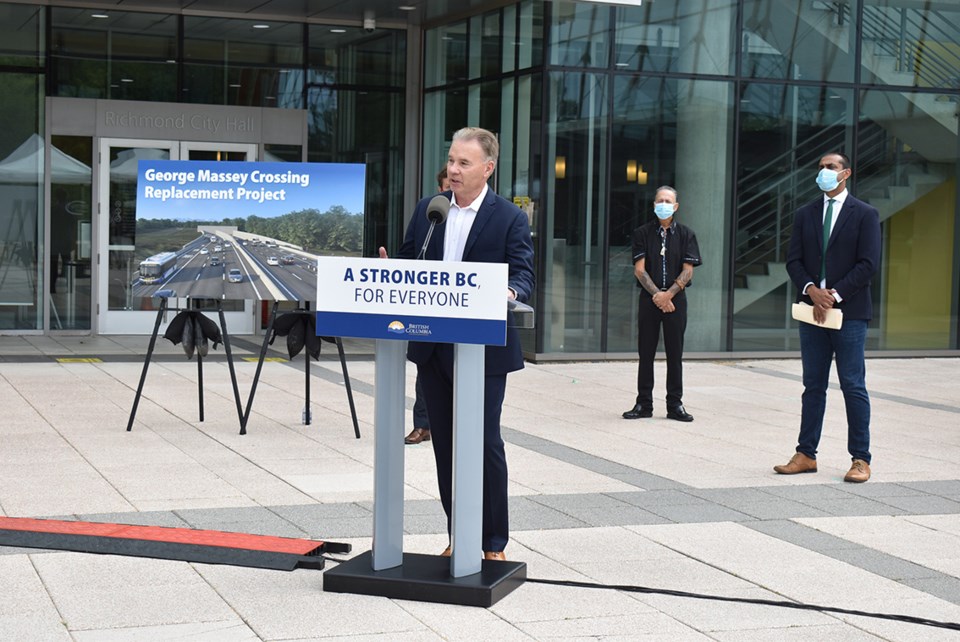An eight-lane, toll-free tunnel will replace the George Massey Tunnel.
The long-awaited announcement came on Wednesday morning outside Richmond City Hall.
The province says the new immersed tube tunnel will cost $4.15 billion and is expected to be built by 2030.
Although the province has been in talks about funding with the federal government, there is so far no commitment from the feds.
“We certainly hope to get significant federal contribution to this… the discussions we’ve had with the federal government have been very productive in this regard,” said Rob Fleming, Minister of Transportation and Infrastructure.
Incumbent Delta Liberal MP Carla Qualtrough told the Optimist this week that the federal government will be a partner in the project.
“This crossing is important for commuters who work and live on opposite sides of the Fraser River,” she said. “Our government understands the importance of this crossing to both the movement of people and the movement of goods, and we are actively working with the Province of BC on this project.”
Garry Shearer, who is running for the Conservatives in Delta, said the first thing he heard when he was the executive director of the Delta Chamber of Commerce was that the business community needed the crossing to be fixed as industrial parks were suffering and trucks needed to move goods.
“It’s very important for the federal government to take some leadership here and provide some support to get this infrastructure in place as soon as possible,” Shearer added.
Delta Mayor George Harvie said he was pleased to see this project move forward to support both communities and economy.
“A new George Massey Crossing will deliver significant benefits for Delta residents and the entire region by addressing the traffic congestion along the crucial Highway 99 corridor,” said Harvie. “Advocating for an infrastructure project of this magnitude and scope requires collaboration and today’s announcement reflects the collective effort and support of mayors and First Nations Chiefs in the region. We appreciate the opportunity to work with the provincial government in advancing this critical infrastructure project to help improve the movement of goods, people and overall liveability in the region.”
While the new tunnel will have a five-metre-wide, multi-use bike path and dedicated rapid bus lines, the province has concluded future rail is not warranted for this transportation corridor and rather the focus will remain on transit.
“The rapid bus actually provides more flexibility to end destinations than a fixed rail line where they’re stranded to make a connection,” Fleming told the Richmond News.
He added TransLink didn’t identify the corridor for rail because the population of Ladner and White Rock won’t grow enough to support it.
He pointed out rapid bus is more flexible than a fixed rail line.
Construction is expected to begin in 2025 after a 3.5-year environmental assessment.
In the meantime, improvements are being made to the Steveston interchange and other peripheral projects.
The current tunnel doesn’t meet current seismic standards and will be decommissioned, although previously the province considered keeping it as a utility corridor.
It will be decommissioned after the new tunnel is built.
-with files from Delta Optimist



